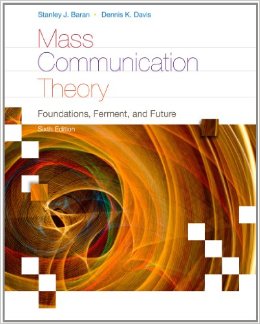Mass Communication Theory Foundations, Ferment, and Future
Review of Chaper 2:
FOUR ERAS OF MEDIA THEORY
We have identified four distinct eras in the development of mass communication theories, beginning with the origin of media theory in the nineteenth century and ending with the emergence of an array of contemporary perspectives.
- THE ERA OF MASS SOCIETY AND MASS CULTURE
The era of mass society theory is characterized by overinflated fears of media’s influence on “average” people and overly optimistic views of their ability to bring about social good. Powerful social and cultural elites, who saw the traditional social order that was serving them so well undermined by popular media content, were the primary advocates of the former view. Urban elites—the new capitalists whose power was increasingly based on industrialization and urbanization—viewed technology, including the mass media, as facilitating control over the physical environment, expanding human productivity, and generating new forms of material wealth. Both ignored the fact that mass communication’s power resides in the uses that people make of it.
- THE EMERGENCE OF THE LIMITED-EFFECTS PERSPECTIVE
A SCIENTIFIC PERSPECTIVE ON MASS COMMUNICATION LEADS TO THE EMERGENCE OF THE LIMITED-EFFECTS PERSPECTIVE
The development of a scientific perspective on mass communication led to the emergence of the limited-effects perspective. To serve commercial clients and help defend the country from the threat of propaganda, communication researchers turned to administrative research and theory to guide their investigation of media’s influence. This shift to empirical research discredited naive mass society theories as “unscientific.” They were replaced with limited-effects theories that argued that because people could resist media’s power and were influenced by competing factors such as friends and family, mass communication most often served to reinforce existing social trends and strengthen rather than threaten the status quo. Elite pluralism is an example of a limited-effects theory. It says that democratic society is made up of interlocking pluralistic groups led by opinion leaders who rely on media for information about politics and the social world. These opinion leaders are well informed, even though their followers are apathetic and ignorant. As a result, democracy works well.
- FERMENT IN THE FIELD: COMPETING CULTURAL PERSPECTIVES CHALLENGE LIMITED-EFFECTS THEORY
The idea that media could indeed have large-scale cultural influence was not dead. In this third era, mass communication theory turned toward critical and cultural studies, driven primarily by the cultural theorists of Europe who held to neo-Marxist assumptions about the wielding of power by economic and media elites. British cultural studies, focusing on mass media’s role in promoting a hegemonic worldview and a dominant culture, is an example of the critical cultural theories spawned during this era.
- EMERGENCE OF MEANING-MAKING PERSPECTIVES ON MEDIA
This era recognizes that mass communication can indeed be powerful, or somewhat powerful, or not powerful at all, because active audience members can (and often do) use media content to create meaningful experiences for themselves. Framing theory, asserting that people use expectations of the social world to make sense of that world, and the media literacy movement, calling for improvement in people’s ability to access, analyze, evaluate, and communicate media messages, are two examples of recent meaning-making theory.
This process of mass communication theory’s development has not been orderly, as you’ll see, nor have all issues been settled. One continuing source of disagreement among media researchers resides in the matter of levels of analysis, where researchers focus their attention in the search for effects. Those who operate at the microscopic level search for effects on individuals. Those who work at the macroscopic level expectmedia’s influence to manifest itself on larger social and cultural levels.
